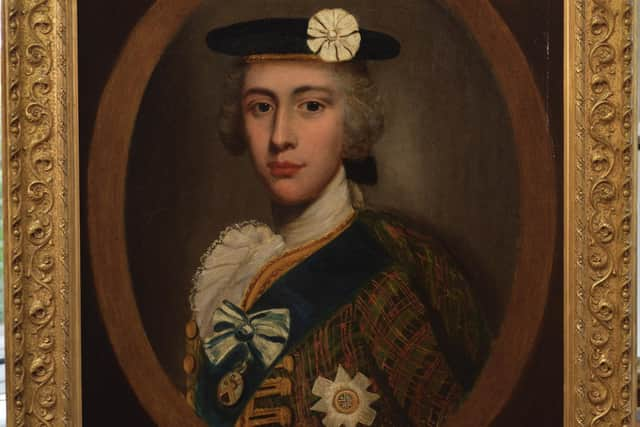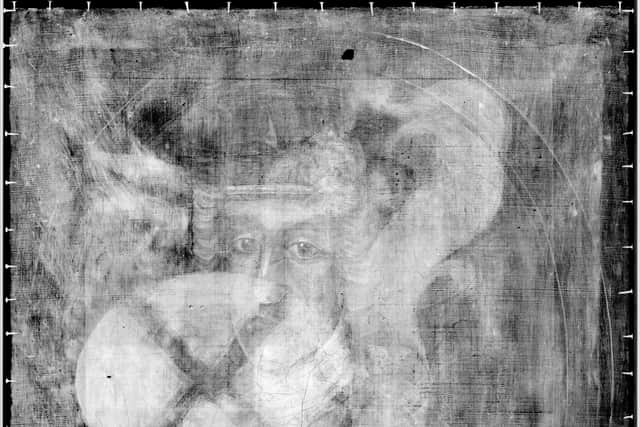Unknown portrait of Bonnie Prince Charlie revealed by x-ray


A previously unknown portrait of Bonnie Prince Charlie likely painted in Scotland to rally support during the 1745 Jacobite has emerged following x-ray analysis of another painting.
The portrait, which is now on show at the West Highland Museum in Fort William, was discovered when art historian Dr Brendor Grosvenor x-rayed a painting of the prince –known as the Highlander Portrait – which depicts the Prince with blue eyes wearing the Order of the Thistle, Scotland’s highest order of chivalry.
Advertisement
Hide AdAdvertisement
Hide AdFollowing the X-ray, an original portrait was revealed showing Charles with his true eye colour – brown – and with a Jacobite banner, clan coat of arms and a red saltire on a white background.


Dr Grosvenor, who also discovered the Allan Ramsay portrait of the prince in 2013, said: “One of the exciting things about Bonnie Prince Charlie’s story is how it still has the capacity to surprise us today.
"I was amazed when this lost image of Charles appeared in the X-ray, and am delighted to be able to share this discovery with visitors to the West Highland Museum, alongside its internationally important collection of Jacobite material.”
It is believed the original may have been adapted in the 19th Century to make Charles appear “bonnier” with the addition of the blue eyes leading the identity of the sitter to be doubted.
The coat of arms featured in the original is possible that of Archibald Menzies of Shian, who fought for Charles during the uprising. A banner of a similar description was captured after the Battle of Culloden in 1746.
Charles stayed at Castle Menzies on his way north to Inverness in 1746, and it may be that the portrait was painted at about this time.
In contrast to Allan Ramsay’s portrait of Charles painted in Edinburgh in 1745, in which Charles wears no tartan and only the Order of the Garter, the Highlander Portrait was intended to have a Scottish audience and may have been intended to help rally support for the prince after his retreat from Derby.
The original hiding beneath the Highlander Portrait was engraved by Robert Strange in Inverness in 1746. Examples of Strange’s engraved portrait, which as based on the original, are replicated in an oil painting, miniatures and a hidden portrait snuff box on display at the West Highland Museum.
Advertisement
Hide AdAdvertisement
Hide AdThe museum has been acquiring Jacobite material culture for its collection for over a century and during that period has established its reputation as a Jacobite focused museum with a collection of objects and an archive of potentially national significance.
The portrait will be displayed in the museum’s Jacobite gallery until the end of December.
Vanessa Martin, Curator Manager of the West Highland Museum, said: ‘The discovery of this unknown portrait of Prince Charles Edward Stuart is a remarkable
accomplishment and we are delighted that Dr Grosvenor has chosen to loan this important painting to the West Highland Museum for its inaugural public display.
“It will be exhibited in our Jacobite gallery alongside an image of the x-ray revealing the original portrait and the banner hidden beneath the now visible portrait.”